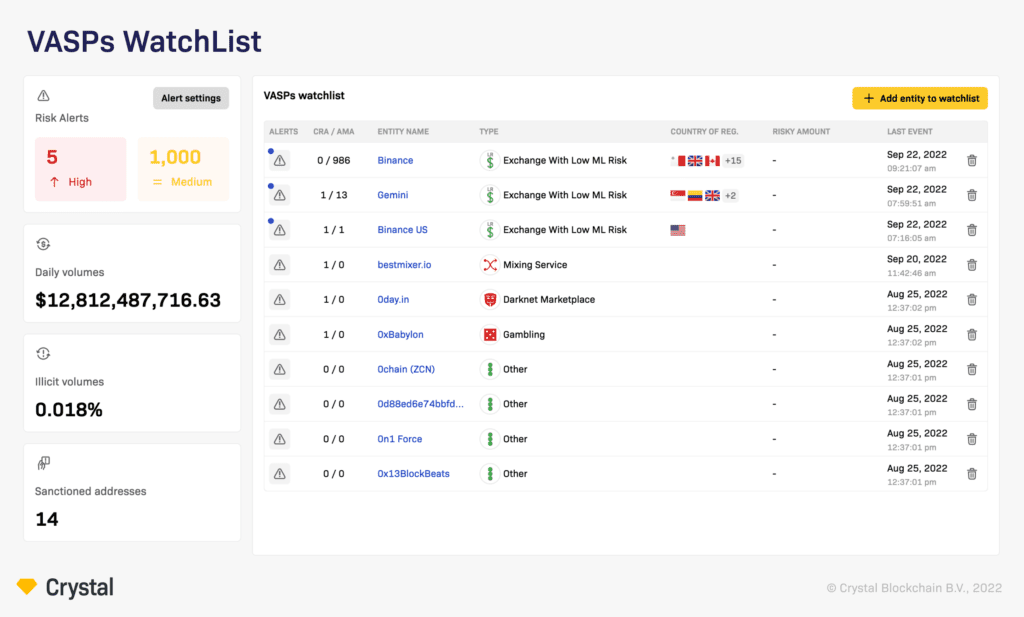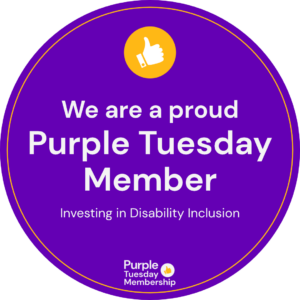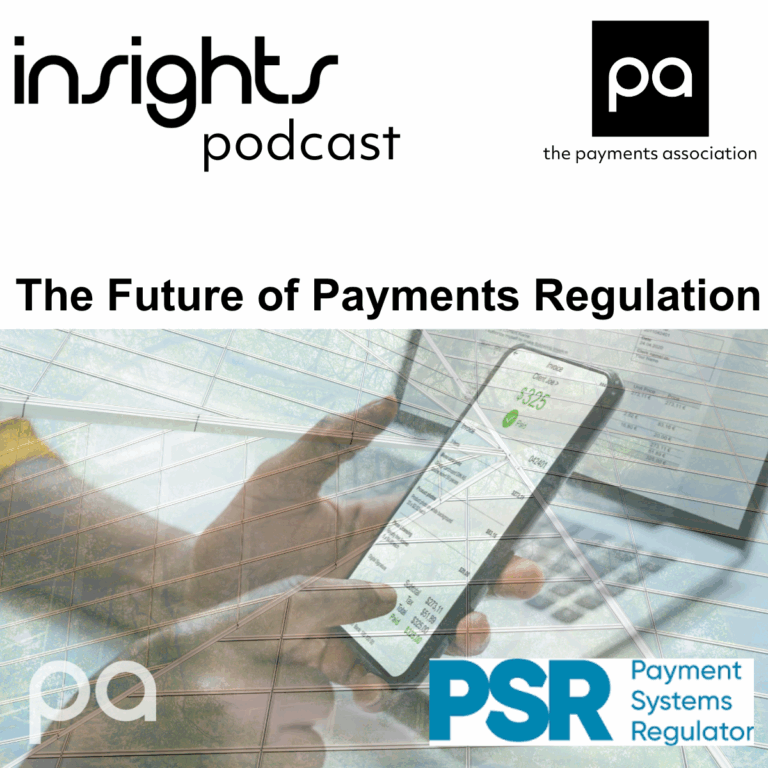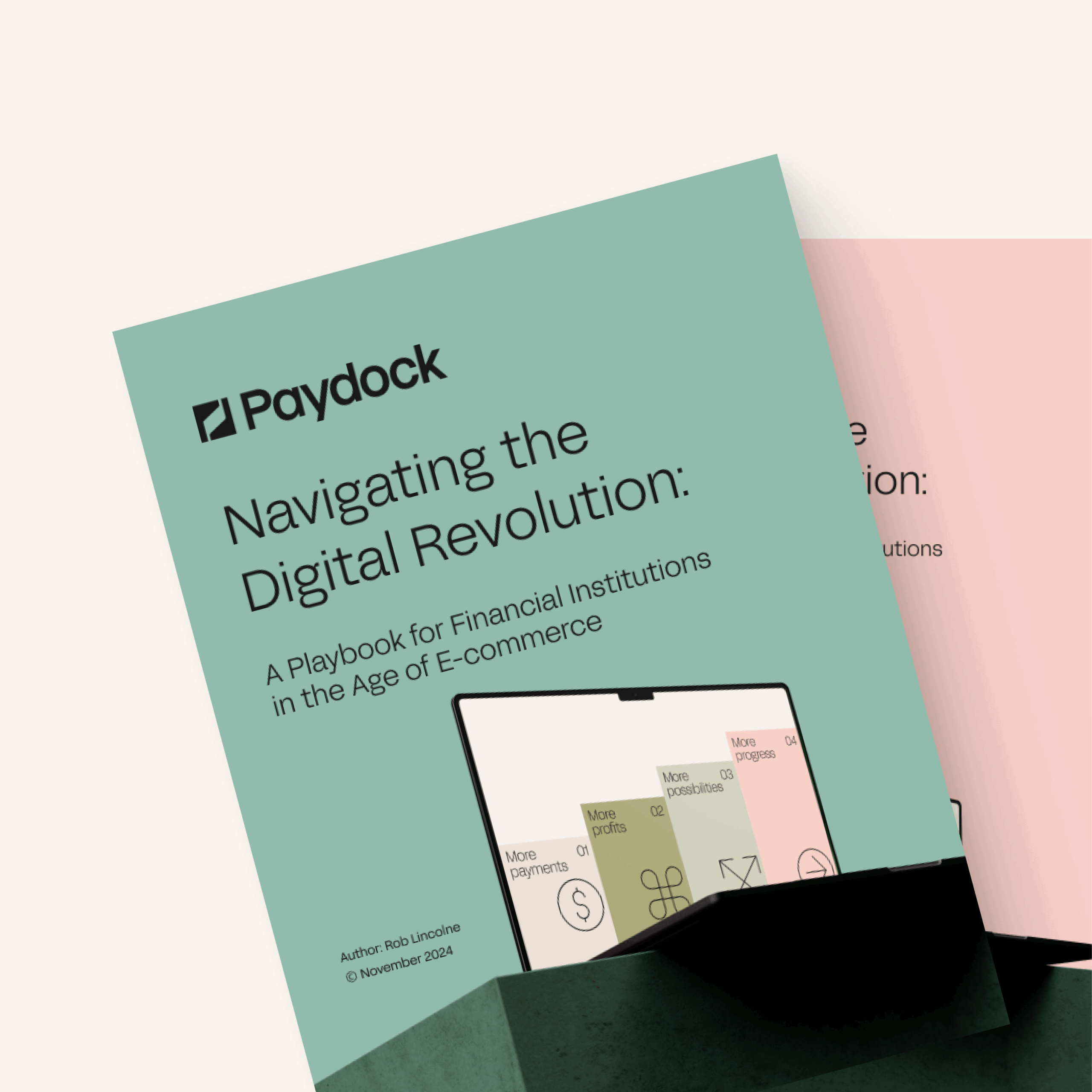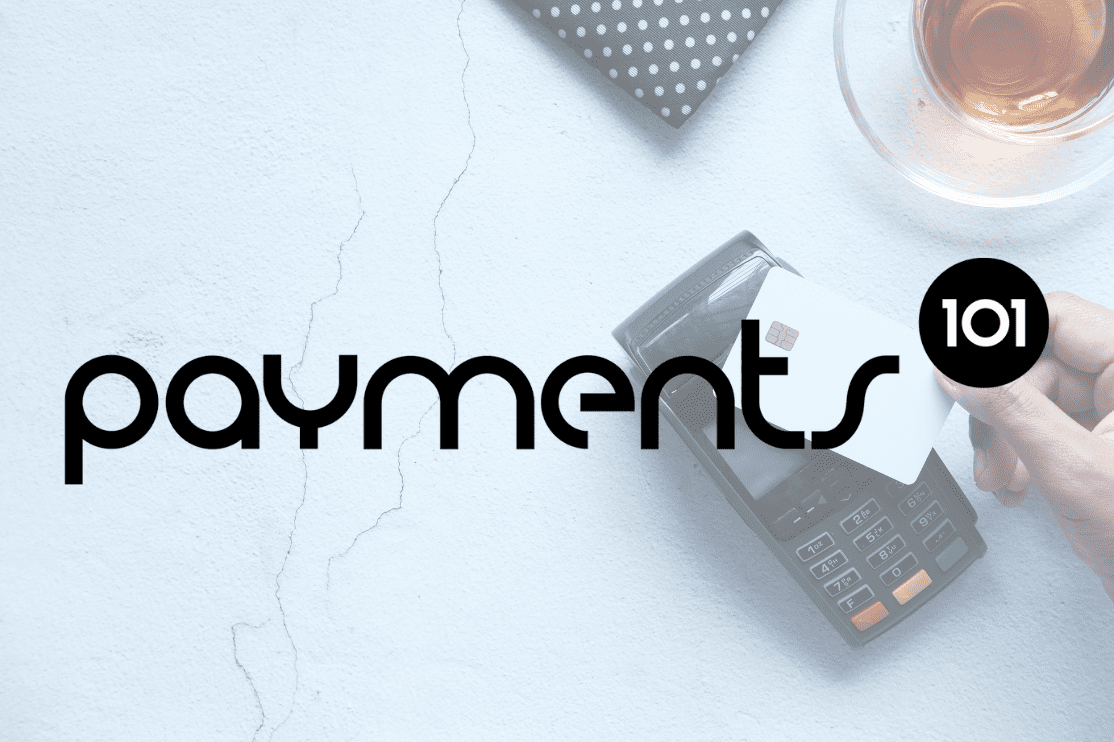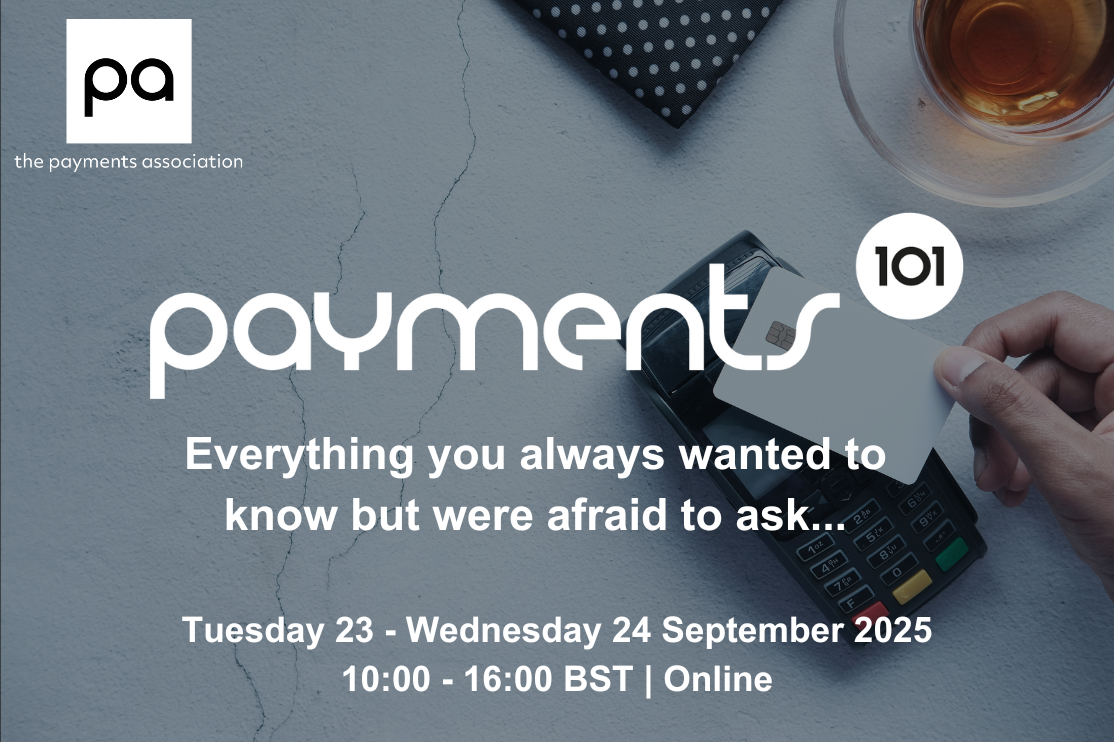The all-new “watchlist” functionality sends alerts and helps to identify possible risks with VASPs for banks and FIs.
The Crystal team is introducing new functionality in BETA that allows for VASP checks. This all-new feature will enable users (typically financial institutions) to add VASP entities for detailed activity monitoring to identify possible risks. The new tool has a watchlist, two compliance risk alerts, activity monitoring alerts, and stats. A watchlist is a set of entities selected by the user, for each of which constant checks are carried out by the rules specified by the user in Alert Settings. Compliance risk and activity monitoring alerts will be generated for these entities.
Crystal Blockchain Product Director Kyrylo Chykhradze stated about the release: “This new solution will also allow KYC officers to track changes in their corporate clients’ policies and other data using cryptocurrency.” He also added: “The new “watchlist” function notifies authorized personnel of suspicious blockchain transactions. The VASP checks enable users to conduct detailed research on the blockchain and minimize manual monitoring.” “Crystal is fully dedicated to enhancing its platform and making it user-friendly for all its customers.”
Compliance Risk Alerts cover risky jurisdictions based on the set of risky countries specified by the user, dangerous entity types based on the risk score profile, and supported assets (the user selects the list of risky investments). Activity Monitoring Alerts include interactions with risky jurisdictions, risky counterparties, and high-volume transactions, where users can specify up to 20 rules for flagging.
The Stats Block delivers statistics related to the operation of the watchlist system, including medium and high-risk alerts, the daily volume of funds received and sent by entities, illicit volume (received or sent to the entities with a risk score higher than 75%) and sanctioned addresses owned by the entities in the watchlist.
